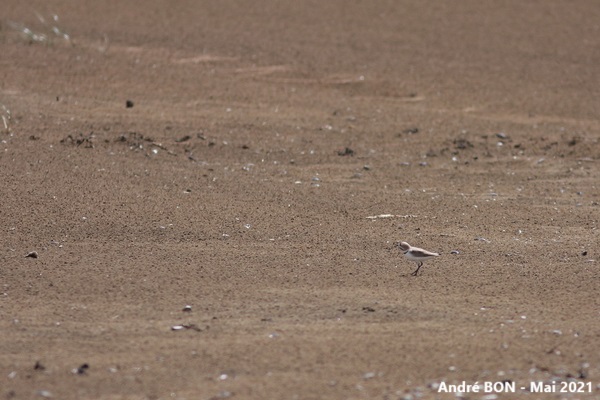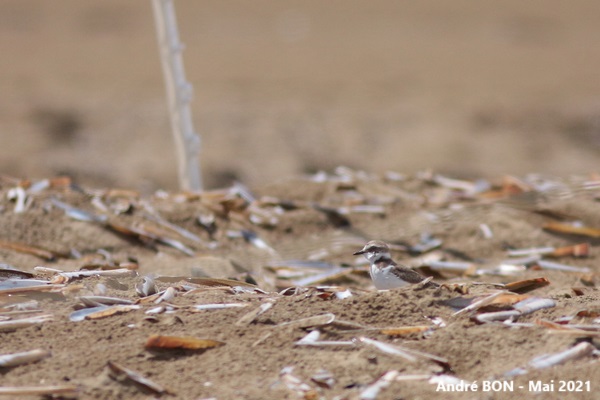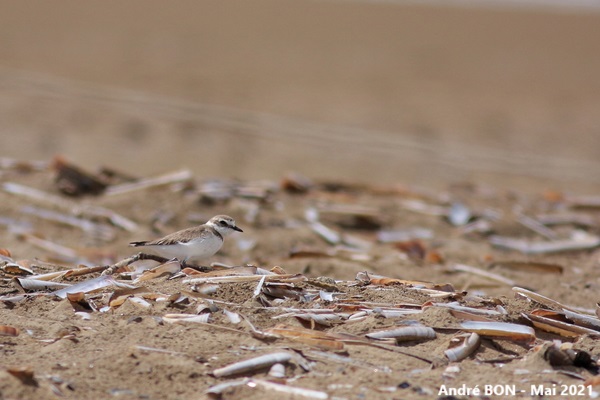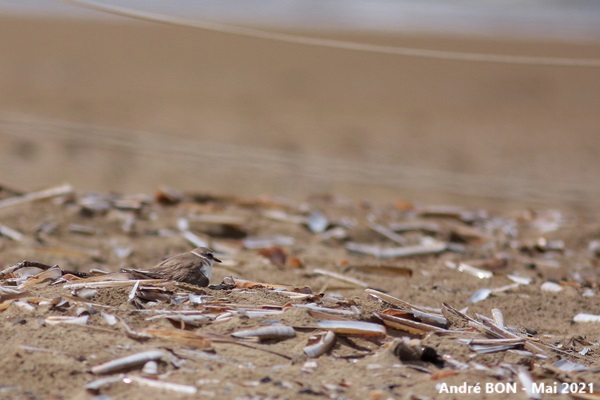



| Kentish Plover (Anarhynchus alexandrinus (Linnaeus, 1758)) |




|
|
Scientific name: Anarhynchus alexandrinus (Linnaeus, 1758) Common name: Kentish Plover Other names: Old scientific name: Charadrius alexandrinus. French name: Gravelot à collier interrompu, Pluvier à collier interrompu, Gravelot de Kent. Order: Charadriiformes Family: Charadriidae Size: Body size: 15 to 18 cm; Weight: 40 to 60 g; Wingspan: 42 to 45 cm. Habitat: Sandy and pebble beaches by the sea or waterways, mudflats and dunes with sparse vegetation. Food: Worms, crustaceans, molluscs and small insects captured after stirring the sand or mud with the legs. Nesting: Laying takes place on the ground in an open environment with no or sparse vegetation, beaches, dunes, etc. There are 1 or 2 layings of 3 eggs per year. Migration: The majority of European birds migrate to the western coasts of the Mediterranean Sea and to the northwest coasts of Africa. Geographic area: Coasts and inland wetlands in temperate or tropical regions of Eurasia, North Africa and America. |
Male Kentish Plovers in breeding plumage have grey-brown upperparts and white underparts. The crown is black on the front and tawny on the back of the head. A thin black line crosses the lores then widens behind the eye. We can see a half black collar which stops on the chest. The bill is thin and black, the legs are greyish. In flight you can see a white wing bar and extensive white areas on the sides of the tail. Females are duller in colour and the black is replaced by brownish grey. When not in breeding plumage both sexes are similar and duller in colour. |
| [To know more about the Kentish Plover] [Next picture] [Top] |

|
While walking on the beach at Saint-Brévin-les-Pins we saw the information panels and markings installed to protect the Kentish Plovers that nest here. We were able to see a few specimens (from a distance, all my shots are significant crops). I might go again one day but with my birding scope to observe from an even greater safety distance. |
| [To know more about the Kentish Plover] [Next picture] [Previous picture] [Top] |

|
The Kentish Plover's colours provide a really effective camouflage on sandy beaches. |
| [To know more about the Kentish Plover] [Next picture] [Previous picture] [Top] |

|
You can guess the dark collar interrupted at chest level. |
| [To know more about the Kentish Plover] [Previous picture] [Top] |

|
This is perhaps a Kentish Plover at the nest. The area has been marked out and protected, probably by the LPO (French league for the protection of birds). We can well understand how this nesting is fragile and could be destroyed by a dog not kept on a leash for example or a walker not respecting the protective barriers. |